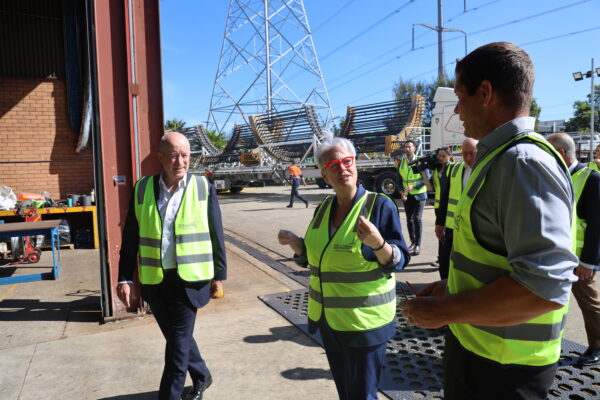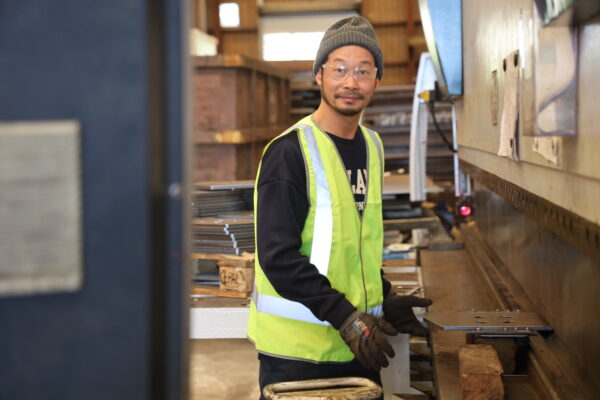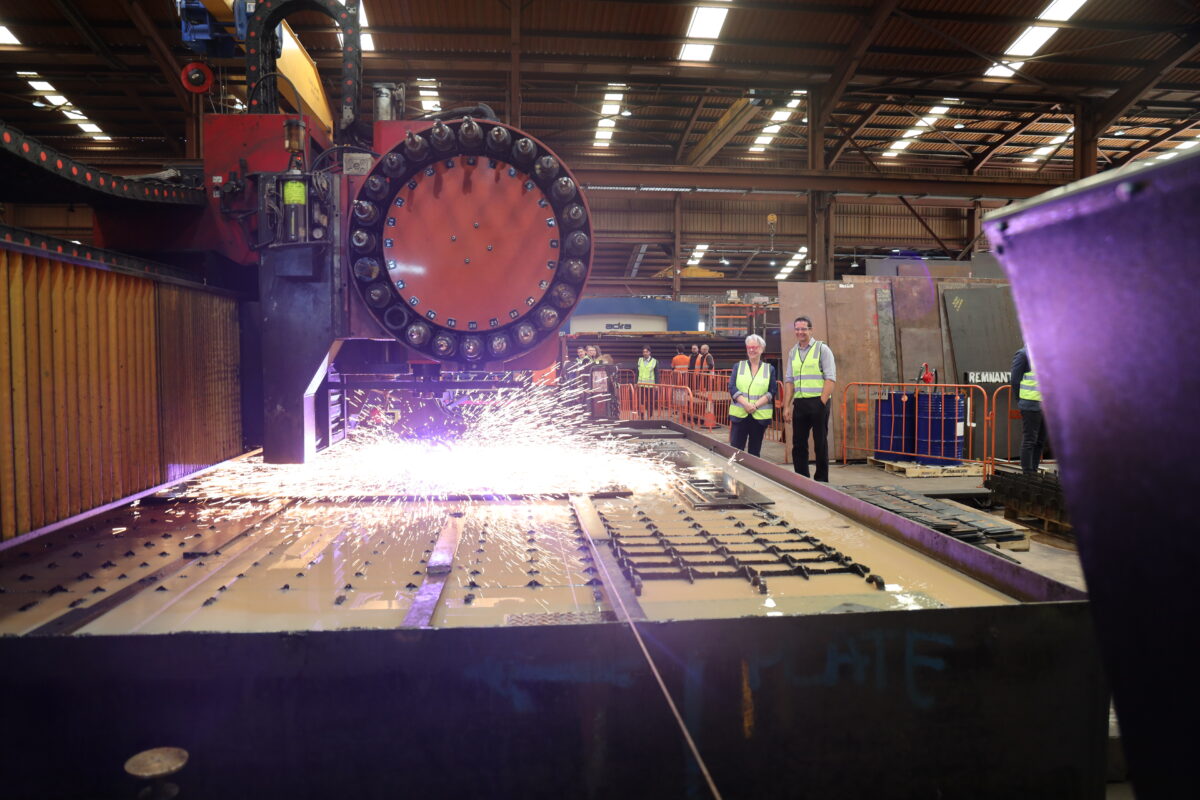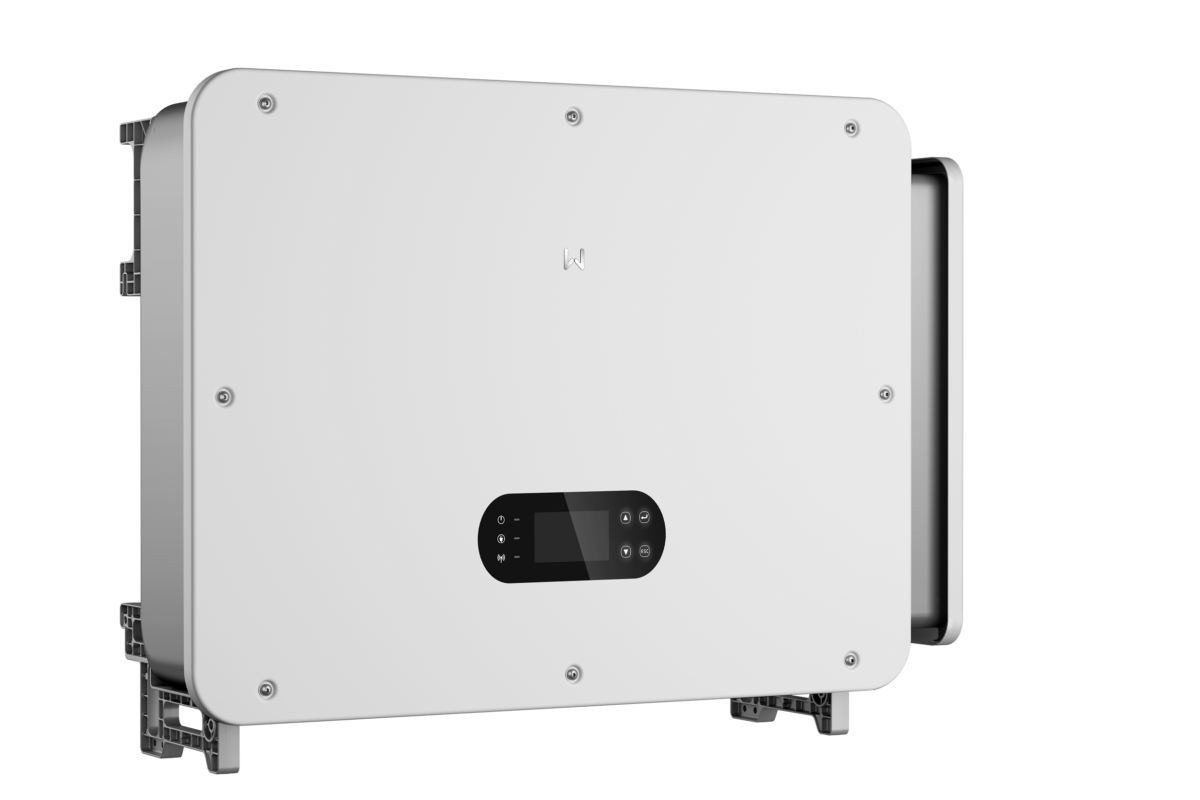The NSW government is investing $28 million (USD 18.4 million) to build a renewables manufacturing hub (RMH) in Blacktown, western Sydney, with a private co-investment of $38 million from metal recycling company Sell & Parker.
The new hub is anticipated to produce thousands of torque tubes, mounts and brackets for solar farms, 200 monopoles per year for transmission infrastructure and 780 turbine anchors for the wind sector.
A government statement says the hub will produce 46,000 tonnes of steel a year, “backing local manufacturing and supporting homegrown innovation and jobs”.
This NSW government’s RMH funding has been awarded under the Renewable Manufacturing Construction Ready Stream of its $480 million Net Zero Manufacturing Initiative.

Image: NSW Government
NSW Minister for Climate Change and Energy Penny Sharpe said the RMH is an example of building industries of the future domestically.
“This facility will not only deliver the steel components needed for renewable energy projects across the state, but it will also strengthen Western Sydney’s role as a powerhouse of innovation and manufacturing,” Sharpe said.
The Australian Manufacturing Workers’ Union (AMWU) NSW/ACT Branch said as the state transitions towards sustainable energy sources and the required infrastructure, investment in local manufacturing and building domestic capability is imperative.
AMWU NSW/ACT State Secretary Brad Pidgeon the organisation encourages further investment in initiatives like this across NSW.
“We continue to work with government towards strengthening our domestic capability, attracting and training young people and apprentices in our industries, and safeguarding the future of quality-made Australian steel,” Pidgeon said.

Image: NSW Government
The NSW Nationals however responded to the news by calling it a failure of the government to chose city over the bush for the hub’s location.
NSW Nationals’ Leader Dugald Saunders said questioned why the Premier and Environment Minister are investing in Blacktown, “when the city won’t feel any of the impact of the energy transition but will reap all the benefits”.
“It’s our communities that are hosting these projects in their backyards and it’s our communities that are suffering for it, yet they are the ones that miss out,” Saunders said.
“I have always said it’s regional NSW that is doing the heavy lifting when it comes to renewables and impacted residents, businesses and communities need to be fairly compensated.”
This content is protected by copyright and may not be reused. If you want to cooperate with us and would like to reuse some of our content, please contact: editors@pv-magazine.com.









1 comment
By submitting this form you agree to pv magazine using your data for the purposes of publishing your comment.
Your personal data will only be disclosed or otherwise transmitted to third parties for the purposes of spam filtering or if this is necessary for technical maintenance of the website. Any other transfer to third parties will not take place unless this is justified on the basis of applicable data protection regulations or if pv magazine is legally obliged to do so.
You may revoke this consent at any time with effect for the future, in which case your personal data will be deleted immediately. Otherwise, your data will be deleted if pv magazine has processed your request or the purpose of data storage is fulfilled.
Further information on data privacy can be found in our Data Protection Policy.